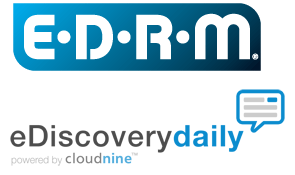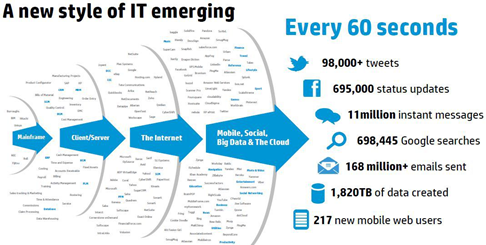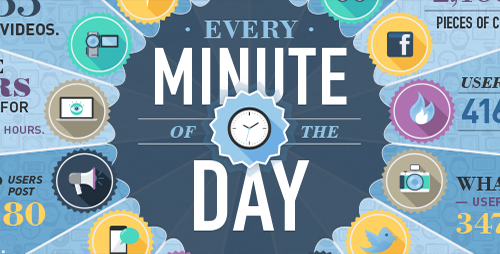This is the fourth of the 2015 LegalTech New York (LTNY) Thought Leader Interview series. eDiscovery Daily interviewed several thought leaders at LTNY this year and generally asked each of them the following questions:
- What are your general observations about LTNY this year and how it fits into emerging trends? Do you think American Lawyer Media (ALM) should consider moving LTNY to a different time of year to minimize travel disruptions due to weather?
- After our discussion last year regarding the new amendments to discovery provisions of the Federal Rules of Civil Procedure, additional changes were made to Rule 37(e). Do you see those changes as being positive and do you see the new amendments passing through Congress this year?
- Last year, most thought leaders agreed that, despite numerous resources in the industry, most attorneys still don’t know a lot about eDiscovery. Do you think anything has been done in the past year to improve the situation?
- What are you working on that you’d like our readers to know about?
Today’s thought leader is Tom O’Connor. Tom is a nationally known consultant, speaker and writer in the area of computerized litigation support systems. A frequent lecturer on the subject of legal technology, Tom has been on the faculty of numerous national CLE providers and has taught college level courses on legal technology. Tom’s involvement with large cases led him to become familiar with dozens of various software applications for litigation support and he has both designed databases and trained legal staffs in their use on many of the cases mentioned above. This work has involved both public and private law firms of all sizes across the nation. Tom is the Director of the Gulf Coast Legal Technology Center in New Orleans and he just joined Advanced Discovery as a Senior ESI Consultant in January.
What are your general observations about LTNY this year and how it fits into emerging trends? Do you think American Lawyer Media (ALM) should consider moving LTNY to a different time of year to minimize travel disruptions due to weather?
Like all LegalTech shows, it’s hectic. I come to New York thinking, “hey, I’m going to go have a good dinner one night, maybe go down to Times Square” and by 8pm, I’m exhausted. You talk to people all day and at the end of the show day there’s a group of people who want to go out to parties and I’m going across the street to the 24 hour deli and getting a sandwich. It’s always busy and there’s always a ton of things going on at the show. It is great, though, that I get people that I don’t get to see on a regular basis, like Michael Arkfeld and George Socha, so this show is really priceless for me to get to talk to them. Craig (Ball) and George and I just had lunch and talked about Continuous Active Learning and those are the sorts of discussions that LTNY facilitates.
Last night, when I was grabbing my sandwich at the end of the day, Henry Dicker (Executive Director of LegalTech) came walking in and we had a great talk about LegalTech and their worldwide schedule. Henry and I have been doing these shows for about the same amount of time. So, it was interesting getting his perspective in a quiet moment about how the show is going and the attendance and so forth. ALM has apparently been having great success with their overseas shows. I think Henry said that, at the end of the year, he was in Singapore, Taiwan, Hong Kong and mainland China – all within five weeks. So, they have been having great success internationally.
As for the show itself, if you’re looking for new product information and what the latest and greatest is across a wide swath of product types (i.e., every type of legal software imaginable), LTNY, because it is in late January/early February has always been the “granddaddy of them all”. Vendors like to get new releases out for the show, make announcements, etc. ILTA is probably the better show for highly technical information and IT types because it’s where they start opening the hood and popping the carburetor off and boring out the engine. That being said, Henry has a great relationship with ILTA and they have an ILTA track here. But, for what LTNY does, which is cut across all products, it’s unbeatable.
The one issue I have with LTNY (which is not really a negative because the slack is picked up by the ABA Tech Show) is the over-emphasis on BIG firm solutions. BIG firms, BIG corporations, BIG data – everything’s BIG. But, the ABA Tech Show does a good job in picking up and emphasizing small to mid-sized firms and solutions for them.
As for trends for this year, every year there’s a buzzword or two that interests people. The one that I think is particularly discussed a lot this year (again, by big firms) is cybersecurity. After last year, with the big security breaches at Sony and Home Depot, I think that’s in the forefront of people’s discussions right now. I think that’s a very hot topic. Information Governance continues to be a hot topic as well – Patrick Burke had a great program on Monday at the Cardozo Law School – so, I think that continues to be (if you’ll pardon the pun) a huge interest for attendees here. The third area of interest that I’m hearing a lot about is analytics – how to use computer tools of all sorts before you get to review and, in some cases, before you even get to the processing stage and pare down that huge amount of data. Using those tools to try to reduce that volume and get a handle on what’s relevant. A few years ago, the hot topic was early case assessment. It’s a continuation of that trend, but with much more sophisticated tools and ability to do it.
As for moving LTNY to a different time of year, yes, I’ve been advocating for years that they consider flipping LegalTech West and LegalTech East. Have LegalTech West at this time of year and go to San Francisco (where the show will be held this year) or Los Angeles (where the show has been held in past years) during the wintertime and New York in the late spring or early summer. I understand there are long term contracts and it would take a while, but it sure would help things with the weather and travel issues. Once you delay a flight for bad weather by half an hour or 45 minutes, everything goes “to hell in a hand basket” quickly. So, yes, I would love to see it moved.
After our discussion last year regarding the new amendments to discovery provisions of the Federal Rules of Civil Procedure, additional changes were made to Rule 37(e). Do you see those changes as being positive and do you see the new amendments passing through Congress this year?
I don’t think the changes were necessarily for the better. The revised Rule 37(e) still benefits corporate defendants, lowering their burden and making it easier for them to not preserve data. Again, I think that only affects a small percentage of litigants. To paraphrase Judge (Shira) Scheindlin, she essentially said that she just doesn’t think it will have an “in the trenches” sort of an impact. It may in one or two cases, but she didn’t see it as being all that big a deal with the amount of cases that they see, at least in her court. Certainly where I live, in New Orleans and throughout the southeast, the people who I work with in more rural or semi-rural jurisdictions with smaller cases and smaller case loads, there is no impact.
Last year, most thought leaders agreed that, despite numerous resources in the industry, most attorneys still don’t know a lot about eDiscovery. Do you think anything has been done in the past year to improve the situation?
Clearly, we’ve advanced. I think there is better understanding by some attorneys, especially corporate counsel, which I think have a much firmer grasp of what’s going on in eDiscovery. Four or five years ago, Michael Arkfeld said probably only 2% of attorneys really got eDiscovery and understood all of the rules. We’ve improved, but, unfortunately, I think we’ve only gone to about 10%. I think there’s still a lot of work to be done. Law schools are still dragging their feet on what they see as some sort of technical training. It’s not in their “wheelhouse”, not in their charter. I think that’s changing and I think you’re going to see a lot more aggressive legal education around these issues in law schools in the next year or so.
I think that you’re seeing the judiciary be very aggressive in demanding competence and, with some of the local rules changes and ethics opinions (such as the recent one in California), requiring some sort of affidavit or certification that you have enough knowledge to make a pleading in this field. I think we will continue to see more of that. It’s great when we see Judge Scheindlin say that or Judge (John) Facciola or Judge (Andrew) Peck or other big names in the field, but I see judges in the federal district courts in places like New Orleans, Mobile and Mississippi also be much more demanding of competence. So, I don’t think it’s isolated to the northeast or the big name judges, it’s something that the judiciary as a whole is pushing. That has probably been the biggest change.
What are you working on that you’d like our readers to know about?
I have a new position – doing what I’ve always been doing, but now for a national company – heading up the consulting services for Advanced Discovery. I’m working with clients on cases, trying to help them find the right tools to answer these problems that we’re talking about in this interview. And, as always, I’m performing a lot of pro bono work for the Louisiana and Mississippi state bars because we have a very high concentration of solo and small firm attorneys “in our neck of the woods”. They are struggling with all sorts of education issues, especially around eDiscovery and technology updates. That’s a major undertaking, from Houston to Pensacola, in states that are poorer and mostly rural. You think about New Orleans or Mobile, but when you get above that I-10 line, you get to an area that’s underserved by the legal community in general and by technology. Courts, attorneys and clients are all struggling with these issues down there.
Thanks, Tom, for participating in the interview!
And to the readers, as always, please share any comments you might have or if you’d like to know more about a particular topic!
Disclaimer: The views represented herein are exclusively the views of the author, and do not necessarily represent the views held by CloudNine. eDiscovery Daily is made available by CloudNine solely for educational purposes to provide general information about general eDiscovery principles and not to provide specific legal advice applicable to any particular circumstance. eDiscoveryDaily should not be used as a substitute for competent legal advice from a lawyer you have retained and who has agreed to represent you.










